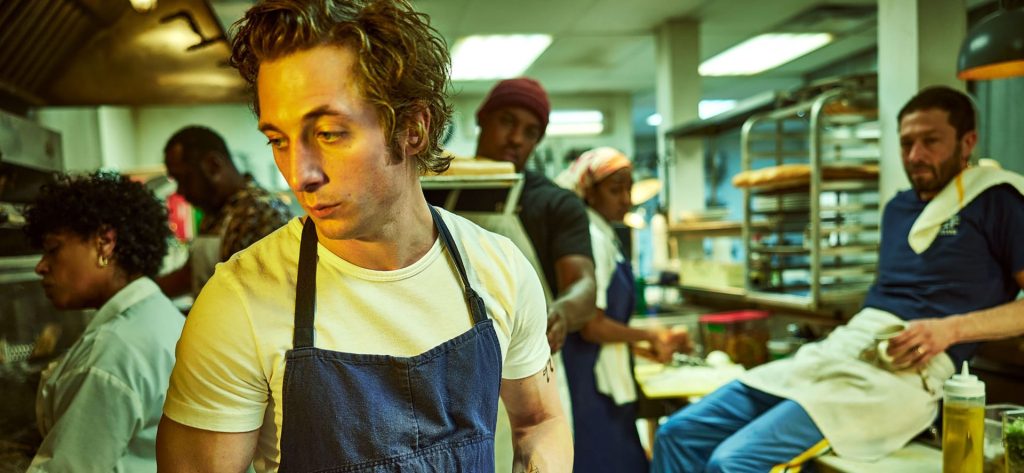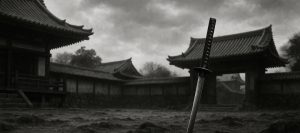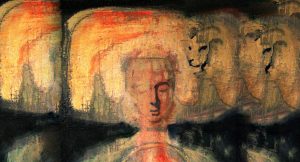If you’ve watched even a single episode of The Bear (Hulu), you’ve felt it: the noise, the heat, the relentless pace of a professional kitchen on the edge of collapse. But beneath the shouting, the slammed fridge doors, and the boiling pots, there’s something deeper happening—something a martial artist would recognize instantly.
Carmy, the show’s lead chef, doesn’t fight in a dojo. He fights on the line. And what The Bear reveals—brilliantly—is that discipline, awareness, and breath control aren’t just for warriors with swords. They’re for anyone in the fire who chooses not to panic.
Here’s what The Bear teaches us about finding calm in chaos—and how martial philosophy helps us hold our center when everything around us is burning.
Control Begins with Breath
“When the mind is calm, the sword is at peace.”
— Takuan Sōhō, Zen monk and swordmaster
In nearly every episode, Carmy and his team are one mistake away from disaster: missed orders, broken equipment, emotional outbursts. But between the moments of mayhem, you’ll notice something—a pause, a breath, a reset.
This mirrors martial breathing practices (like qigong or kokyu), where controlling the breath is the first line of defense against fear, fatigue, or aggression. In high-stress situations, shallow, reactive breathing sends the body into panic mode. Deep, controlled breath anchors the mind, slows reaction, and invites precision.
Lesson: Before you react, exhale. Presence starts with oxygen.
Ritual is the Architecture of Focus
“Repetition is the mother of skill.”
— Ancient martial proverb
From the knife roll to the “Yes, Chef!” affirmations, The Bear shows how ritual transforms stress into structure. When chaos builds, Carmy doesn’t look for novelty—he returns to routine. Mise en place (everything in its place) isn’t just about organization. It’s about mental readiness.
This mirrors how martial artists bow before stepping onto the mat, tie their belt the same way, or clean their weapon in silence. These are not habits of tradition—they’re training for attention.
Lesson: When pressure rises, don’t seek escape. Return to your ritual. It holds the shape of your focus.
Calm is Contagious—and So is Panic
“The commander stands like a boulder in the stream.”
— Sun Tzu, The Art of War
One of Carmy’s greatest challenges is leadership. Not cooking, but managing the energy of the room. In martial systems, the leader’s posture and tone determine the rhythm of the group. When the senior stays calm, others stabilize. When they snap, it echoes.
In The Bear, when Carmy maintains his composure, the kitchen breathes. When he lets anger or trauma take the lead, the team unravels. The same is true in any environment—whether it’s a kitchen, office, or dojo.
Lesson: If you want to lead, regulate yourself first. You don’t need to be loud to be in charge—you need to be grounded.
NEW! Put the principles from this article into practice with the free courage-boosting MaArtial app on the App Store for iOs and Play Store for Android.
Pressure is a Teacher, Not an Enemy
“The way is in training.”
— Miyamoto Musashi
Most people avoid stress. But martial arts and The Bear share a different view: pressure is part of the practice. It reveals what’s weak, sharpens what’s dull, and demands full attention.
Carmy isn’t perfect—but he shows up. He stays in the fire long enough to improve not just his craft, but his character.
Lesson: Don’t wait for motivation. Show up. Practice under pressure is where real growth lives.
Cultivating the Warrior’s Kitchen—In Life and Mind
You don’t have to work in a restaurant to relate to the chaos in The Bear. You just have to have felt overwhelmed. Overstimulated. One task away from snapping. In those moments, you can default to panic—or train like a warrior:
- Return to breath
- Use structure to build focus
- Steady your body to lead others
- Let stress reveal your edge, not break it
Because the fire isn’t the problem. It’s how you stand inside it that defines your strength.












